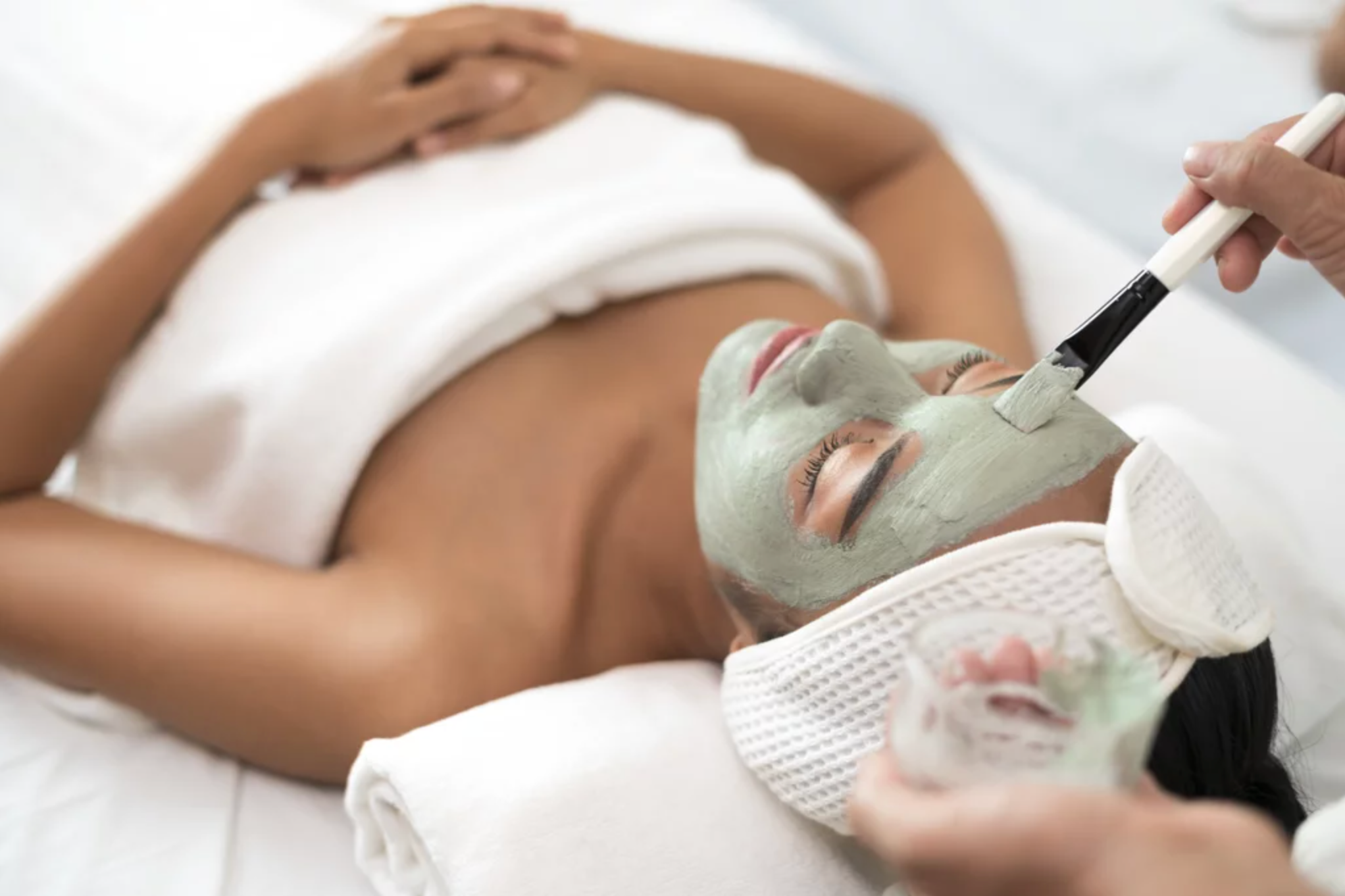When getting a facial, one of the most important steps is the mask toward the end of the service. After putting your skin through exfoliation and extractions, the mask is the restorative part of the facial that allows your face to calm down. While the usual treatment is some sort of potted soothing or hydrating mask, many estheticians opt instead for rubber peel-off masks that make for an #OddlySatisfying Boomerang on Instagram. But even though these gentle peel-off masks are fun, they make beauty lovers wonder, what do rubber masks do? Are they actually effective, or are they just for show?
These masks, which go on in a goopy gel texture then harden into a rubberized form to allow for a seamless (but gentle) peel-off, aren't actually made of rubber. And in fact, there are two different kinds of these "rubber" masks: rubber and jelly.
"Rubber masks are a great way to drive skin active ingredients into the skin after cleansing and exfoliating the face," says Dr. Marnie Nussbaum, MD, a board-certified dermatologist in NYC. "After the skin is properly prepared, a rubber mask increases absorption and efficacy of any skin active (calming ingredients, hydrating ingredients, amino acids, or collagen powder). Jelly masks can also be used at the end of certain procedures to calm and soothe the skin."

As for jelly masks, "the main ingredient that gives jelly masks its efficacy is alginate, or processed algae," Aziel Rodgers, lead esthetician at LA beauty bar The Things We Do, explains to The Zoe Report. "[Alginate] absorbs water 20 times its weight and creates a gel-like substance. As it dries down on the skin, it creates a kind of seal which helps drive the serums you apply beforehand better into the skin." Meanwhile, rubber masks don't contain as much alginate and are more clay-based. "They're not as hydrating and are more meant to seal in the product applied beforehand," she says.
Rodgers explained that the terms "rubber masks" and "jelly masks" are often used interchangeably in the skincare community, but it's important to note the distinction if you're looking for a clay base or algae base. Most facial studios stock up jelly masks — the ones that contain algae — to soothe the skin after an aggressive facial. Korean beauty retailers also refer to these masks as "modeling masks," and they can be clay or algae-based.
Read on to learn why dermatologists and estheticians love incorporating rubber and jelly masks into their facials, the benefits of the treatment, and which ones can help you achieve similar results at home.
What Are "Jelly" Masks For?
Estheticians like Crystal Koro of Crystal Clear Skin & Beauty rave about jelly masks' cooling cryogenic effect on the skin. "They have the ability to drop your natural skin temperature, creating an occlusive effect that increases penetration of the previously applied serum," says Koro. "They relax the facial muscles from tension and help with lymphatic drainage."
She continues, "The cryogenic effect benefits the eye and lip area, reducing puffiness and inflammation, which is why I love to cover the eyes. No matter how aggressive I am during the [facial, most] of my clients never leave my room with a red or blotchy face. These jelly masks truly calm down the skin and reduce any redness or erythema, which is great especially after extractions."
What Is The Main Ingredient In Jelly Masks?
"Marine algae is a common ingredient in rubber masks, [known] for its hydrating, antioxidant, and soothing properties," says celebrity esthetician Shani Darden of Shani Darden Skincare. She also looks for masks that contain hyaluronic acid to hydrate the skin even more.
According to Dr. Nussbaum, the sodium alginate derived from brown seaweed or kelp in most jelly masks allows the mask to congeal after being applied and mold to the contours of the face, sealing in moisture and driving ingredients deep into the skin.
What Skin Types Should Use Jelly Masks?
"The beauty of this mask is that any skin type can use it," says Rodgers. "It's especially helpful for calming the skin after extractions and great for drier [skin] types because of the seal it creates for the skin, resulting in better product absorption." Koro also adds that jelly masks are super customizable, so she adds mixes up the masks according to what her clients need. Detoxifying charcoal jelly masks work well for acne prone skin, and gold masks are great for clients who need a little glow before an event.
What Kinds Of Jelly Masks Do Estheticians Use?
"I have tried over 10 different brands [of jelly masks,] and what is most important to me is for the mask's ability to keep the cryogenic effect on the skin for a longer period of time," says Koro. "I have tried rubber masks that feel great for a minute or two then become room temperature, which defeats the power of the cold calming cryo effect."
Darden exclusively stocks up on hydrating masks so that her clients can see immediately plumped skin, while Rodgers is very conscious of eco-friendliness of the packaging. "These kind of masks can be wasteful because there are some that include two components — one bag for the powder and then one bag for a gel," she explains. "I'd rather buy the compound in bulk and store it away properly."
Are There Jelly Masks You Can Use At Home?
There aren't many substitutes for salon-grade jelly masks, but there are a few that work for at-home treatments. And though you probably won't be getting a professional facial anytime soon, try out some of these substitutes for all of your home facials while you're safely social distancing.





